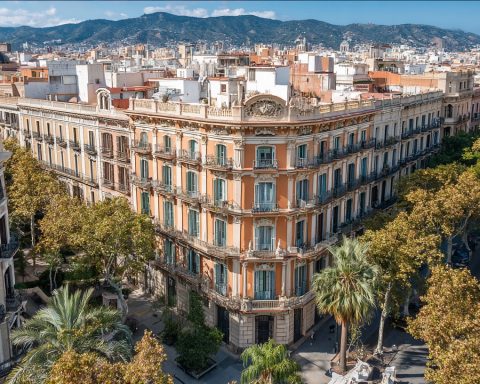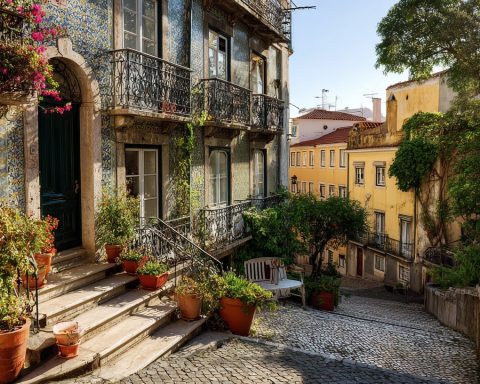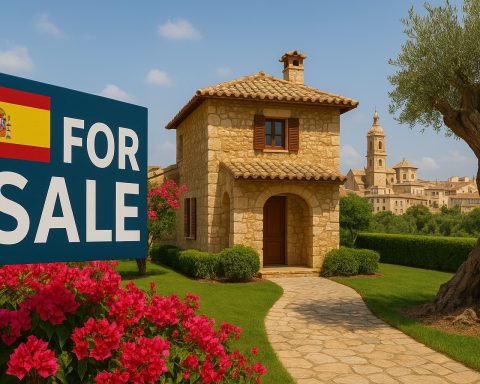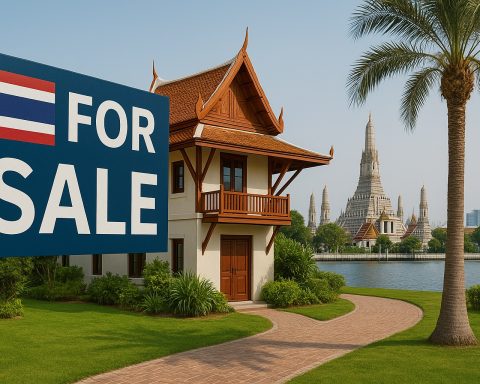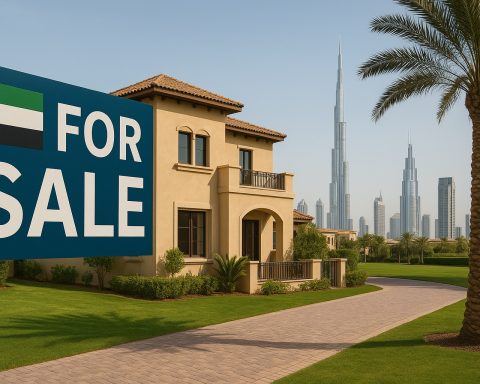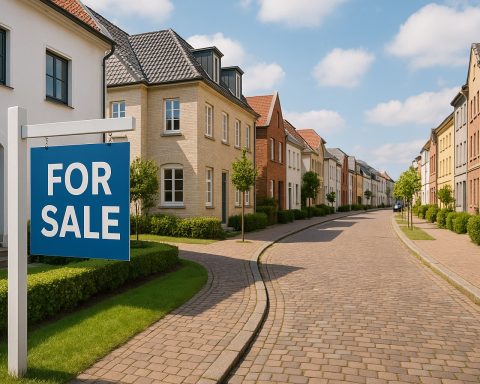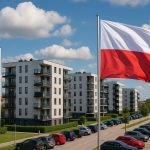Introduction: A Market at a Turning Point
Singapore’s property market in 2025 stands at a turning point, balancing years of soaring growth with new signs of stabilization. After a prolonged upswing in prices across all segments – from private condos to office skyscrapers – recent data reveals a moderation in momentum ura.gov.sg sbr.com.sg. Government policies are kicking in, supply is ramping up, and interest rates remain elevated, all contributing to a cooler yet resilient market climate. This comprehensive report dives into every real estate segment – residential, commercial (office and retail), industrial, and mixed-use – unpacking current 2025 trends and projecting what’s ahead for the next 3–5 years. We’ll highlight major developments, policy impacts, supply-demand dynamics, and foreign investment trends, concluding with key takeaways for investors, homebuyers, developers, and policymakers.
Residential Real Estate: Prices Moderate Amid Supply Surge
Private Housing Market (Condominiums & Landed): Singapore’s private residential prices continue to rise in 2025, but the pace has significantly eased. In Q1 2025, the overall private home price index inched up +0.8% QoQ, a marked slowdown from the +2.3% jump in Q4 2024 ura.gov.sg. This indicates that the post-pandemic boom is giving way to a more sustainable growth trajectory. Notably, non-landed home prices in the city’s Rest of Central Region still rose a firm +1.7% QoQ, outperforming other regions, while prime Core Central Region condos saw a modest +0.8% uptick ura.gov.sg. Landed property values crept up only +0.4% QoQ, reflecting a plateau after previous highs ura.gov.sg. On the rental front, private residential rents have started stabilizing – rising just +0.4% in Q1 ura.gov.sg – after a red-hot run that peaked in late 2023. In fact, private rents have collectively fallen ~4% from their Q3 2023 peak as new supply comes onstream sbr.com.sg. Vacancy rates remain healthy and tenant demand, while softer, is sustained by continued household formation and returning expatriates.
Forward Supply & Demand: A significant housing supply wave is on the horizon. About 55,600 new private residential units (including executive condos) are slated for completion in the next few years (7,200 completing in 2025 alone) ura.gov.sg. This is a dramatic supply surge compared to the last decade and is by design – the government has aggressively ramped up land sales. The 1H2025 Government Land Sales (GLS) program is tendering out 5,030 units on its Confirmed List, roughly 60% higher than the average in 2021–2023 ura.gov.sg. In total, GLS sites in H1 2025 plus upcoming tenders could yield ~32,500 new units for sale by 2026 ura.gov.sg. These new projects will replenish the inventory of unsold homes, which had dipped to very low levels during the boom. By end-Q1 2025 there were ~19,600 unsold units (including ECs) in the pipeline, up slightly from 21,679 in late 2024 ura.gov.sg – a sign that supply is finally catching up to demand. With more homes being built, supply-demand conditions are coming into better balance sbr.com.sg sbr.com.sg. This bodes well for homebuyers: more choice and less frantic competition, which should help cap excessive price growth in the mid-term.
Cooling Measures & Buyer Sentiment: Singapore’s government has doubled down on policies to ensure sustainable prices. Repeated cooling measures – especially the April 2023 hike of Additional Buyer’s Stamp Duty (ABSD) for foreigners to a hefty 60% – have dramatically curbed speculative and foreign demand sgluxuryhomes.com.sg. As a result, foreign buyers now account for barely ~1–2% of private home transactions (down from ~5% in 2022), while local and Permanent Resident buyers dominate dollarbackmortgage.com. Tighter loan thresholds (Total Debt Servicing Ratio) and higher property taxes on luxury homes also reinforce financial prudence. Meanwhile, the spike in mortgage rates through 2022–2023 has tempered buying euphoria, though rates have eased slightly from their peak. Analysts note an inflection: after 12 consecutive quarters of price growth through 2023, the private market is entering a period of stability sgluxuryhomes.com.sg. In fact, Q3 2024 even saw a brief -0.7% price dip, the first decline in over a year sbr.com.sg, signaling that the market “fever” has broken. Home sales volumes were modest in early 2024 – new launches hit record-low take-up – but showed signs of recovery by late 2024 as sentiment improved sbr.com.sg. By Q1 2025, new home sales rebounded to 3,375 units sold (nearly matching last quarter’s volume) ura.gov.sg, buoyed by successful project launches at benchmark prices. However, resale transactions have dipped (~3,565 units in Q1, 49% of total sales) as buyers gravitate to new projects and abundant upcoming supply ura.gov.sg. Overall, buyers remain active but also more price-sensitive and selective, given economic uncertainties and rising alternatives (like renting or waiting for BTO flats).
Public Housing (HDB) Market: Singapore’s HDB resale market – a crucial segment for local homebuyers – is also charting a softer trajectory in 2025. The HDB Resale Price Index climbed +1.6% QoQ in Q1 2025, a clear deceleration from the 2.6% surge of Q4 2024 channelnewsasia.com. This marks one of the slowest quarterly gains in recent years, indicating that record resale prices may be plateauing. Resale flat transactions actually rose 2.6% in Q1 (6,590 flats sold) as more supply and slightly moderated prices lured buyers channelnewsasia.com. The government attributes the cooling to increased housing options – e.g. the largest Sale of Balance Flats exercise in Feb 2025 provided thousands of new units, easing some demand off the resale market channelnewsasia.com. Policy rhetoric also plays a part: HDB echoed warnings that interest rates remain high and buyers “who buy high will be hit harder if prices weaken,” urging financial prudence channelnewsasia.com.
Importantly, HDB supply is set to vastly expand in coming years. The government has announced plans to launch over 50,000 new Build-to-Order (BTO) flats from 2025 to 2027, with ~19,600 units in 2025 alone channelnewsasia.com. By 2027, around 130,000 new flats would have been added since 2021, boosting public housing stock by 11% channelnewsasia.com. Additionally, more existing flats are reaching their 5-year Minimum Occupation Period and will enter the resale market: roughly 8,000 units in 2025, rising to 13,500 in 2026 and 19,500 by 2028 channelnewsasia.com. This influx of new and newly eligible flats should gradually relieve the supply crunch that drove HDB prices up nearly 30% over 2020–2023. Analysts expect HDB price growth to moderate further – possibly into the low single-digits annually – as buyers have more BTO choices (including some “flats with shorter waiting times”) and less urgency to pay cash-over-valuation for resales channelnewsasia.com. For home seekers, public housing affordability is a hot political issue (with an election on the horizon), so policymakers are likely to keep a close watch and intervene if necessary to keep resale prices in check channelnewsasia.com.
Residential Outlook (Next 3–5 Years): The consensus is that Singapore’s housing market is entering a phase of measured growth. Private home prices are forecast to rise modestly – CBRE projects about +3% to +6% in 2025 sbr.com.sg – supported by genuine demand and high household incomes, but tempered by the substantial pipeline supply and cooling measures. Any further interest rate cuts (expected in late 2025) could improve affordability slightly, but economic uncertainty (projected GDP growth of only 0–2% in 2025 ura.gov.sg) may cap buyer exuberance. The government’s proactive land supply means annual new launches will stay elevated (~12,000 units in 2025 versus just 6,600 in 2024) sbr.com.sg, giving buyers more choices and bargaining power. We may see periodic price dips or plateaus in certain quarters as the market digests new supply, especially in the mass-market Outside Central Region. However, no sharp crash is anticipated – Singapore’s solid employment, population growth policies, and the “safe haven” appeal of its real estate to locals and permanent residents provide a firm floor under demand. In public housing, expect low-single-digit annual resale price gains as long as supply expansion continues and authorities maintain a firm stance on keeping HDB flats affordable for the masses. Overall, the residential sector is transitioning from an overheating boom toward a healthier equilibrium – a welcome development for long-term stability sbr.com.sg.
Commercial Real Estate: Office and Retail Trends
Office Market (Central Business District & Decentralized Offices): Singapore’s office sector in 2025 is steadying after weathering pandemic-era disruptions and subsequent recovery. Office property values have mostly plateaued – prices of office space edged down -0.2% QoQ in Q1 2025 (after a -0.7% fall in Q4 2024) ura.gov.sg. On the flip side, office rents have started inching up again, rising +0.3% in Q1 2025 after a mild dip previously ura.gov.sg. Grade A offices in the Core CBD are seeing a “flight to quality” demand, as occupiers upgrade to newer, more efficient buildings, which is supporting rental rates even as older building rents lag. However, the market is bifurcated: new trophy towers enjoy high pre-commitment and premium rents, while aging offices face higher vacancies and potential redevelopment. The island-wide office vacancy rate rose to 11.7% in Q1 2025 (from 10.6% in Q4) ura.gov.sg, partly due to new supply coming online and some corporate space downsizing. For instance, Q1 saw +98,000 sqm of new office stock delivered, outpacing net take-up which actually declined slightly ura.gov.sg. Even so, overall occupied office space remains near all-time highs, reflecting Singapore’s status as a regional business hub.
Key Drivers: Demand for office space is supported by growth in sectors like finance, legal, and tech – these industries continue to expand their presence in Singapore, drawn by its stable environment. Flexible workspace and hybrid work trends mean tenants are optimizing space usage, but most firms have not abandoned offices; instead, many seek higher quality spaces to entice staff back in. On the supply side, the pipeline is limited in the near term: as of Q1 2025 about 856,000 sqm GFA of office space was in development, slightly lower than the previous quarter ura.gov.sg. In fact, the upcoming 3-year supply is estimated to be 55% below the historical average, which will naturally tighten the market sbr.com.sg. Notably, the government is encouraging decentralization – new office clusters in places like Jurong Lake District and Paya Lebar – but these will unfold gradually over the second half of the decade. In the traditional CBD, a wave of older buildings are being withdrawn for redevelopment under incentive schemes (more on this in Mixed-Use section), which also curtails available stock. This limited supply, combined with steady demand, is projected to lift prime office rents by around +2% in 2025 sbr.com.sg, roughly tracking GDP growth. The main headwinds are the soft economic outlook and rising operating costs (fit-out expenses, higher service charges due to inflation) which make some firms cautious about expansion or relocation. Still, Singapore remains one of APAC’s top three investment destinations for office assets cbre.com.sg, thanks to its yield stability and blue-chip tenant pool. Investors from around the world continue to acquire Singapore office towers as long-term core assets, reflecting confidence in the sector’s post-pandemic resilience.
Retail & Hospitality (Commercial Spaces): The retail real estate segment has emerged from the pandemic downturn and is growing again, though with nuanced trends between prime tourist belts and suburban centers. In Q1 2025, retail property prices jumped +1.9% QoQ, rebounding strongly after a previous dip ura.gov.sg. However, retail rents dipped -0.5% QoQ in the same quarter, giving back a bit of the gains made in late 2024 ura.gov.sg. This hints that while investor confidence in retail properties (prices) is upbeat – likely anticipating a full recovery – actual leasing conditions are still finding equilibrium. By end-Q1, retail vacancy crept up to 6.8% (from 6.2%), as a net 12,000 sqm of space was vacated even while new stock increased ura.gov.sg. Retailers are expanding, but the churn is high: F&B and experiential tenants are taking up prime spots, whereas some older shops are consolidating or moving online.
The bright spot is prime retail districts: Shopping belt rents (e.g. Orchard Road, Marina Bay) are seeing healthy growth, buoyed by resurgent tourism and a calendar of new attractions/events. After Singapore fully reopened borders, tourist footfall is climbing toward pre-COVID levels, boosting sales at malls and luxury boutiques. Analysts forecast prime retail rents to rise ~2–3% in 2025, on top of the ~3.6% increase last year sbr.com.sg. Suburban malls, which were very resilient during COVID, are now experiencing slower growth (~1–2% rent uptick projected sbr.com.sg) as competition intensifies and consumers enjoy more shopping options island-wide. A notable factor supporting the retail market is limited new supply – 2024 already saw a surge of completions (like The Woodleigh Mall, etc.), and 2025’s new retail space is 40% less than last year sbr.com.sg. With only ~524,000 sqm in the pipeline as of Q1 2025 ura.gov.sg, supply pressure is minimal, which should help mall landlords regain pricing power.
Another trend is the blend of retail with entertainment and dining to draw in shoppers. Landlords are remixing tenant profiles, allocating more space to gyms, clinics, and experience-based stores to increase dwell time. The government’s push for lifestyle precincts – such as rejuvenating Orchard Road into a “lifestyle destination” – will further shape retail real estate. Hospitality properties (hotels) are also rebounding, indirectly lifting retail in tourist areas. Hotel occupancy and room rates in 2024–25 have soared on pent-up travel demand, leading some investors to eye mixed hotel-retail redevelopments. Overall, the commercial segment is in recovery mode, with offices stable and retail improving. By 2026–2028, new mega-developments (e.g. the Orchard Road integrated developments, or new mixed-use projects downtown) could add fresh supply, but these are paced carefully. For now, investors remain selective, preferring well-located Grade A offices and prime malls, while avoiding older offices or strata retail with weaker prospects sbr.com.sg sbr.com.sg.
Commercial Outlook: Over the next 3–5 years, expect office rents to grind upward moderately (~2–3% annually for Grade A CBD space sbr.com.sg) due to tight supply, but overall occupancy may hover around 90% with downsizing offset by new business entrants. If the global economy weakens further, multinationals could slow leasing, but any excess vacancy might be temporary given Singapore’s draw as a regional HQ location. In retail, a full return of international travelers (projected by late 2025) and rising consumer spending will likely push prime retail rents higher by mid-single digits annually through 2027, especially in tourism-centric corridors ura.gov.sg sbr.com.sg. Suburban retail will depend on local consumption trends and e-commerce competition; malls that innovate will thrive, while stagnant ones may face pressure. Notably, omnichannel retail is now the norm – landlords providing spaces that complement online sales (showrooms, click-and-collect points) will have an edge.
Industrial & Logistics Property: Resilient with Caution Signs
Singapore’s industrial real estate sector – covering factories, warehouses, business parks and logistics facilities – has been a star performer in recent years and remains resilient in 2025. As global supply chains reconfigure and high-tech manufacturing expands, demand for quality industrial space in Singapore stays robust. In Q1 2025, the all-industrial rental index rose by +0.5% QoQ, marking the 18th consecutive quarter of rental growth cbre.com.sg. Although this pace is steady rather than spectacular, it underscores the sector’s consistent upward trajectory since the pandemic lows (rents are up ~23.7% cumulatively from the Q3 2020 trough) cbre.com.sg. Industrial property prices have been climbing even faster – the overall industrial price index gained +1.5% QoQ in Q1 (moderating from +2.0% in Q4) cbre.com.sg. In fact, for the past year, capital values have risen faster than rents, indicating strong investor appetite for industrial assets cbre.com.sg. This investor demand is driven by expectations of future growth in sectors like electronics, biotech, and logistics, as well as Singapore’s limited land supply for industrial use.
Drilling down, performance varies by sub-segment: Modern business parks (high-spec campus-style offices for tech/R&D) saw rents jump +1.2% QoQ in Q1, accelerating sharply as new top-tier projects (e.g. CapitaLand’s Geneo at Science Park) command premium rents cbre.com.sg. However, older business parks struggle with high vacancies (sector vacancy spiked to 24.1% in Q1) cbre.com.sg, revealing a two-tier market. Warehouse and logistics space had rents up +0.6% QoQ – a slight cooling from the previous quarter cbre.com.sg – as a wave of new mega-warehouses came online. Two major logistics facilities (Boustead’s Tuas mega-warehouse and DB Schenker’s Red Lion 2 at Tampines) completed in Q1 2025 cbre.com.sg, contributing to a temporary oversupply. Consequently, warehouse occupancy dipped 1 percentage point to ~90.5% cbre.com.sg, and with more completions on the way, near-term rent growth in logistics may flatten. General factory space remains in demand: single-user factories (often built-to-suit for manufacturers) saw rents rise +0.8% QoQ cbre.com.sg and occupancy improve to 88.6% cbre.com.sg, as sectors like precision engineering and food manufacturing expand. Interestingly, net factory supply in Q1 turned negative – more space was demolished (old stock removed) than added – which helped tighten that market cbre.com.sg. Multiple-user factory rents were up a modest +0.3% QoQ cbre.com.sg, but this segment still enjoys high occupancy ~91% and benefits from SMEs and startups taking small units.
Policy & Drivers: The government, via JTC Corporation, keeps a close watch on industrial supply. As of Q1, around 7.7 million sq ft of new industrial space is scheduled for completion over the next 3 quarters of 2025 cbre.com.sg – roughly 1.3% of existing stock. About one-third of that upcoming supply are warehouses, another one-third factories, and the rest business park space cbre.com.sg. With this influx, we might see pockets of oversupply (especially in warehouse segment) in the short term cbre.com.sg. However, over 60% of new logistics space is pre-leased already sbr.com.sg, indicating that many facilities under construction (often custom-built) already have tenants lined up, which will soften any downward pressure on rents. A notable macro development is the planned Johor-Singapore Special Economic Zone (JS-SEZ), a bilateral initiative to integrate industrial and tech ecosystems across the border. While it’s too early to gauge its full impact, the JS-SEZ could eventually allow Singapore-based firms to expand certain operations in Johor (where land is plentiful) while keeping high-value functions in Singapore cbre.com.sg. In the medium term, this may boost Singapore’s position as a regional manufacturing and distribution hub, rather than undermining it cbre.com.sg.
Another tailwind is Singapore’s focus on becoming an advanced manufacturing hub – initiatives in robotics, AI, and semiconductor sectors are attracting sizeable investments cbre.com.sg. For example, the electronics manufacturing cluster grew 5.0% YoY in Q1 2025 cbre.com.sg, and global chipmakers are setting up here to leverage a skilled workforce and stable infrastructure. This underpins demand for high-spec production facilities and cleanrooms. Even amidst global uncertainties, most industrial tenants in Singapore are opting to renew leases rather than relocate out, given the strategic advantages cbre.com.sg. Landlords, in turn, have become more accommodative – offering incentives or flexible terms – to retain and attract tenants as expansionary demand cools slightly cbre.com.sg. Overall, the industrial property segment is stable and near peak capacity, with the only caution being the forthcoming supply that needs to be absorbed.
Industrial Outlook: In the next few years, expect industrial rents to remain on a gentle uptrend with some quarterly volatility. Prime logistics rents could stay flat or see slight declines in 2025–26 if supply overshoots in the short run sbr.com.sg, but demand from 3PLs (third-party logistics), e-commerce, and cold chain operators will keep the market fundamentally firm. Modern factory and business park rents should continue rising in the low-single-digits annually, especially for newer facilities with advanced specs. Industrial property prices may outpace rent growth slightly, as investors (including local REITs and global funds) compete for limited prime freehold industrial assets – a trend already evident with four straight quarters of faster price appreciation cbre.com.sg. One potential game-changer on the horizon is interest rates: if financing costs fall with anticipated rate cuts in late 2025, investor appetite could further increase, driving capital values up. Conversely, any global downturn affecting trade could soften occupier demand; Singapore’s factory output is sensitive to electronics cycles and export markets. Nevertheless, with Singapore’s strategic push into high-tech industries (biomedical, electronics, aerospace) and its reliable infrastructure, the industrial property sector is poised to remain resilient. Policymakers will likely intervene (e.g., via JTC releasing more land or adjusting land pricing) to prevent overheating or shortages, aiming for a Goldilocks balance that keeps this sector attractive to both manufacturers and investors.
Mixed-Use Developments: The Future of Urban Real Estate
In 2025, Singapore is aggressively promoting mixed-use developments as a strategy to rejuvenate the city and meet evolving lifestyle needs. Mixed-use projects – which blend residential, commercial, office, and sometimes hospitality components in one – are becoming the norm for new major developments. Government policy is a key catalyst: The Urban Redevelopment Authority (URA) has extended two incentive schemes, the Central Business District Incentive (CBDI) Scheme and the Strategic Development Incentive (SDI) Scheme, for 5 more years channelnewsasia.com channelnewsasia.com. These schemes, first introduced in 2019, grant developers lucrative bonuses (like extra buildable floor area) if they convert older offices and monolithic buildings in the CBD and other strategic areas into vibrant mixed-use projects channelnewsasia.com. The rationale is to transform Singapore’s downtown from a 9-to-5 office zone into a 24/7 lively neighborhood with homes, shops, eateries, hotels and public spaces. The response has been strong: 17 CBDI proposals and 12 SDI proposals have already received in-principle approval channelnewsasia.com. Several big redevelopments are underway – for example, in the Anson Road/Tanjong Pagar district, four aging office buildings (like the former Fuji Xerox Towers, now “Newport Plaza”, and the former AXA Tower, now “Skywaters”) are being rebuilt into mixed-use complexes channelnewsasia.com. When these complete, the once purely commercial Anson precinct will boast 1,000+ new homes along with hotels, retail and green spaces, creating a new live-work-play enclave downtown channelnewsasia.com.
Elsewhere, the SDI scheme has catalyzed plans to revamp areas like Orchard Road, Marina Bay, and Bugis by encouraging landowners to collaborate and redevelop older sites into integrated projects. This means more condos atop malls, offices integrated with residences, and generally more efficient land use. The government is also refining rules to keep these schemes effective – for example, as of 2025, developers in certain CBD zones (Anson, Cecil St) can now retain more office space if they include long-stay serviced apartments in the mix channelnewsasia.com channelnewsasia.com. This tweak provides flexibility to add quasi-residential components (serviced apartments with 3+ month leases) to office projects, catering to expatriates who want to live near work. At the same time, new sustainability requirements are being introduced: developers must submit plans for adaptive reuse or partial conservation of existing structures when doing these redevelopments channelnewsasia.com, to support Singapore’s green goals.
Why Mixed-Use Matters: Mixed-use developments are seen as future-proofing Singapore’s real estate. They align with trends of urban living where people desire amenities at their doorstep and shorter commutes. For investors and developers, mixed-use projects diversify income streams (e.g., retail rents can buffer office cyclicality) and often command a premium due to their “all-in-one” convenience. Singapore’s upcoming Master Plan 2025 is expected to further emphasize mixed-use zoning – possibly rezoning parts of downtown and city fringe to allow a blend of residential with commercial. Additionally, decentralization projects like Jurong Lake District, Punggol Digital District, and the Greater Southern Waterfront plan all revolve around integrated, mixed-use clusters. For instance, the Greater Southern Waterfront (redeveloping old port land) is envisioned with new housing, offices and leisure attractions side by side, rolled out over the next decade sgluxuryhomes.com.sg sgluxuryhomes.com.sg. This will unlock enormous real estate value and create entire new towns of mixed-use communities along Singapore’s coastline. Similarly, Punggol’s Digital District (opening from 2024 onward) combines a university campus, business parks, and residences, exemplifying the mixed-use approach to innovation hubs sgluxuryhomes.com.sg.
Outlook: In the next 3–5 years, many of the mixed-use initiatives will start bearing fruit. By 2028, Singapore’s CBD could look very different: more condos and hotels amid the office towers, a thriving after-hours scene, and possibly an expanded residential population downtown. The continued success of integrated developments like Guoco Tower, Marina One, and Paya Lebar Quarter in recent years has proven the model’s viability – these complexes enjoyed high occupancy and strong price appreciation. We anticipate new launches of mixed-use projects to garner keen interest, especially from foreign investors who prize Singapore’s stable market (though foreigners may invest via commercial portions or REITs given residential ABSD). For residents, a mixed-use city means greater convenience and potentially shorter travel times, aligning with the government’s “15-minute city” vision. One watch point is that such large projects are complex and capital-intensive, so economic slowdowns could delay some plans. Yet, Singapore’s commitment to long-term planning suggests that mixed-use development will remain a cornerstone of its real estate strategy, knitting together the residential, commercial, and industrial narratives we’ve discussed into a cohesive urban fabric.
Key Market Drivers and Government Impacts
Multiple forces are shaping Singapore’s real estate scene in 2025 and beyond, working in tandem to moderate the market and set the stage for the future:
- Economic Climate & Interest Rates: After a strong post-pandemic rebound, Singapore’s economic growth is slowing to a forecast 0%–2% in 2025 ura.gov.sg amid global headwinds. A cooler economy naturally dampens property demand, as companies hire more cautiously and some households delay upgrading homes. At the same time, interest rates – which spiked in 2022–2023 – have stabilized and slightly eased from peak levels, improving financing conditions. The Monetary Authority of Singapore (MAS) notes that easing mortgage rates combined with steady incomes have kept household debt servicing manageable sbr.com.sg. However, rates are still higher than the ultra-low levels of the 2010s channelnewsasia.com, and MAS warns borrowers to be prudent in case of future rate or cycle swings. Importantly, many analysts expect rate cuts by late 2024 or 2025, which could spur a renewed interest in real estate investment and borrowing in the medium term sbr.com.sg. This prospect has already lifted sentiment – 2024 saw property investment sales jump +28% to S$28.6B, reversing the prior year’s slump sbr.com.sg. If rates indeed fall over the next 1–2 years, it may provide a tailwind to both occupier demand and investor appetite across segments.
- Government Cooling Measures: Singapore’s property cycle is tightly managed by the government. A series of cooling measures since 2010 (stamp duties, loan caps, seller levies) were further reinforced in the last two years. The headline move was doubling ABSD for foreign buyers to 60% in April 2023 sgluxuryhomes.com.sg, effectively pricing out most speculative foreign demand for residential properties. Additional tweaks included higher ABSD for second-home local buyers, tighter Total Debt Servicing Ratio limits, and a 15-month waiting period for private downsizers buying HDB flats (to curb cash-rich en bloc sellers from inflating HDB prices). The impact is evident: private price growth slowed to +1.6% in the first 3 quarters of 2024 vs 3.9% in the same period 2023 sbr.com.sg, and even recorded a quarterly decline sbr.com.sg. Transaction volumes stayed moderate and speculative flipping (sub-sales) remained low (~4% of sales in Q1 2025) ura.gov.sg. MAS credits these macroprudential measures for restraining excessive demand and ensuring households don’t over-leverage sbr.com.sg. Going forward, policymakers have signaled they are willing to adjust policies as needed to prevent either a bubble or a hard landing channelnewsasia.com. For example, if the market were to overheat again (say, due to rate cuts or renewed foreign interest), expect another round of stamp duty hikes or credit tightening. Conversely, if a sharp downturn threatens stability, rules could be relaxed (as seen in past recessions) to prop up genuine demand. The net effect is a smoother property cycle with less extreme swings than in an unregulated market – investors and homebuyers can thus expect a relatively stable environment engineered for sustainable growth.
- Housing Supply Initiatives: The government’s decisive steps to boost housing supply are a game-changer. From record GLS programs for private housing ura.gov.sg to massive HDB BTO launches channelnewsasia.com, authorities are tackling the supply crunch that had fueled rapid price gains. For private developers, more land means more project launches – breaking the fear-of-missing-out mentality among buyers since alternatives are plentiful. The pipeline of over 50,000 private units by 2028 ura.gov.sg will gradually raise the annual completion rate (2022 had under 4,000 units; 2025–2027 will average ~8,700 units/year) and replenish unsold inventory to healthier levels ura.gov.sg. In public housing, shortening BTO wait times and offering new “Plus” models in prime locations aim to give first-timers attractive options besides the resale market. These supply-side measures address structural demand from a growing population – Singapore’s population is projected to rise from 5.6M now toward 6.0M and beyond in coming years – without letting prices skyrocket unchecked. Over the next 5 years, continued calibration of supply will be key: the government has pledged to keep a “steady stream” of land supply and calibrate it to market conditions ura.gov.sg, essentially preventing severe under- or over-building. This dynamic supply management is a strong stabilizer for the real estate market.
- Foreign Investment & Safe Haven Appeal: Despite strict residential taxes, foreign capital is still flocking to Singapore real estate in other ways. Singapore remains one of Asia-Pacific’s top investment destinations – ranked in the Top 3 for 2025 by CBRE cbre.com.sg – thanks to its safe-haven status, rule of law, and yield stability. Cross-border investors (including sovereign funds, private equity, and family offices) are particularly active in commercial properties and industrial assets, which have no ABSD and offer attractive rental yields around 4–6%. In 2024, foreign investment helped drive a 28% surge in overall real estate investment volume sbr.com.sg. Big-ticket office and hotel deals in Singapore often feature foreign buyers, drawn by confidence in long-term capital appreciation and Singapore’s currency strength. Furthermore, ultra-high-net-worth individuals who still desire a Singapore home have found workarounds: some buy luxury condos via wealth management structures or new citizenship routes, others focus on the exclusive Sentosa Cove landed enclave open to foreigners with approval sgluxuryhomes.com.sg sgluxuryhomes.com.sg. Notably, the profile of foreign residential buyers has shifted – fewer speculative investors, more genuine long-term holders (often new PRs or ex-pats setting up bases). Looking ahead, foreign investment in Singapore is expected to rise ~5–10% in 2025 cbre.com sbr.com.sg as global investors increase allocation to hard assets and Singapore’s market offers both stability and growth. That said, foreign buying of private homes will likely remain subdued (unless ABSD is eased) – instead, foreign funds may pour into REITs, commercial developments, or upcoming mixed-use projects (often via joint ventures with local developers). Policymakers will keep balancing openness to investment with prioritizing local housing needs, but overall, foreign capital will continue to be a significant demand driver, especially in the high-end and commercial segments.
- Infrastructure and Urban Transformation: Lastly, Singapore’s ambitious infrastructure plans serve as a backbone for the real estate outlook. Projects like Changi Airport Terminal 5, Tuas Mega Port, new MRT lines, and the Greater Southern Waterfront development will unlock new locales and enhance connectivity. For instance, the Jurong Region Line and Cross-Island MRT Line opening in phases by 2030 will make previously remote areas more accessible, boosting property values there. Likewise, as the city expands westward and southward with port relocations, vast tracts of land will host future housing and offices, keeping the pipeline beyond 2027 full. The upcoming URA Master Plan 2025 (to be released soon) is eagerly anticipated as it will earmark land use changes and new growth areas, possibly introducing new hubs or higher plot ratios in certain regions sbr.com.sg sbr.com.sg. One expected focus is sustainability – more green buildings, conservation efforts, and adaptive reuse (already seen in the CBD incentive requiring a sustainability statement channelnewsasia.com). These infrastructure and planning initiatives are strong long-term positives, injecting confidence that Singapore’s real estate will not stagnate but continuously renew itself with modern, mixed, and green developments.
In summary, the interplay of prudent regulation, ample supply injections, steady foreign interest, and visionary urban planning is steering Singapore’s property market toward a new equilibrium. Stakeholders would do well to stay attuned to these macro drivers, as they set the boundaries within which property values and opportunities will evolve.
Outlook 2025–2030: Stability with Pockets of Growth
Looking ahead to the next 3–5 years, Singapore’s real estate market is expected to be stable and resilient, with no extreme booms or busts on the horizon – a stark contrast to the roller-coaster of the early 2010s. Home prices will likely see gradual growth aligned with income trends: mid-single-digit percentage increases annually, barring any major shocks. The combination of continued housing supply and policy vigilance means the era of double-digit yearly spikes is over (for now). Nonetheless, certain segments could outpace the average: for instance, the luxury prime segment may see renewed interest if geopolitical tensions drive more wealthy individuals to secure a Singapore base (we observed a jump in $10M+ landed home deals in early 2025) era.com.sg. Conversely, mass-market condo prices might plateau once the huge 2025–2027 supply is delivered. Residential rents, after the sharp run-up during 2021–2023, have likely peaked; we anticipate rent growth to flatten in 2025 and perhaps even decline slightly in select areas as vacancy normalizes – good news for tenants after a challenging stretch. By 2026–2027, as the population expands and absorption catches up, rents should climb again modestly.
In the office sector, Singapore should maintain its position as a regional office hub, but it faces external competition (e.g., emerging Southeast Asian cities) and internal changes (hybrid work). Even so, limited new construction through 2027 implies that any incremental demand (say from companies relocating from Hong Kong or expanding in Asia) will tighten vacancies and lift rents in the CBD. We project office capital values to remain firm; any yield expansion from rising interest rates seems unlikely to persist if rates drop again in late 2025. Retail real estate likely offers a recovery play – prime retail rents might cumulatively rise ~10–15% over the next 5 years as tourism fully rebounds and consumer confidence returns sbr.com.sg. Secondary retail locations will need repositioning to stay relevant, and some underperforming malls could be targets for redevelopment (perhaps under the SDI scheme). Industrial properties should continue their steady climb unless a severe global recession hits the manufacturing sector. Logistics and high-tech factory space are especially favored; indeed, investors now often consider industrial assets as “core” real estate on par with offices, due to their strong tenant demand and the e-commerce boom. Singapore’s push into sustainability and digitization could also create new sub-sectors – expect growth in data centers, life-science labs, and green-certified buildings – which will command premium rents and valuations.
Crucially, Singapore’s real estate is entering a phase of maturity. Market players can expect fewer surprises and more of a “managed” trajectory. The government’s dual focus on affordability and competitiveness suggests policies will remain finely tuned: housing will be made affordable for citizens (through supply and grants) while ensuring the investment climate stays attractive for businesses and investors. If global conditions remain broadly favorable (no major financial crises), Singapore property in 2030 may well be worth more than today, but the growth will be grounded in fundamentals, not frenzy.
Key Insights and Takeaways for Stakeholders
Finally, what do these trends mean for you – whether you’re investing, looking for a home, building projects, or regulating the market?
- 🔑 Investors: Singapore real estate remains a sound long-term investment, but picking the right segment is key. Gone are the days of quick speculative flips; instead, focus on income-producing assets and growth areas. Industrial and logistics properties stand out for stable yields and demand – indeed, industrial/logistics was the top investment choice in 2024, even surpassing office assets sbr.com.sg sbr.com.sg. Residential investments will still yield capital gains, but be mindful of heavy taxes (ABSD) and slower price growth ahead. For those with deep pockets, prime commercial assets (office towers, prime retail, hotels) in Singapore offer safe-haven capital preservation and are poised for rental recovery. As interest rates ease, transaction volumes are forecast to rise further in 2025 sbr.com.sg, so savvy investors can position ahead of that curve. Diversification is wise – consider REITs or mixed-use developments to hedge exposure. Above all, maintain a mid-to-long horizon; Singapore’s transparent market and political stability reward patient investors with steady, if unspectacular, returns rather than quick windfalls.
- 🏠 Homebuyers: The tide is turning in favor of homebuyers after a seller’s market streak. More choices and slower price increases mean you can afford to be patient and discerning. With a bumper crop of new private condo launches in 2025–2027, developers are competing for your dollar, so expect more incentives, discounts, or perks – especially for city-fringe and mass-market projects where supply is ample. Don’t rush into overbidding on resales; if a unit is too pricey, there’s likely a similar one coming up for sale soon given the rising resale stock channelnewsasia.com. For HDB upgraders or first-timers, the ramped-up BTO supply (50k flats by 2027) channelnewsasia.com and new Prime/Plus schemes will provide attractive subsidized homes – consider those if you meet eligibility, as they offer the best value. Interest rates are still high, so buy within your means (heed MAS’s advice on financial prudence channelnewsasia.com); use tools like fixed-rate mortgages to manage future rate risk. Overall, 2025–2026 may be one of the better windows in recent memory to enter the market, with prices stabilizing and plenty of options. Just remember: property is cyclical. Avoid “buying at the peak” of any micro-trend (certain hot estates or launches) and focus on long-term suitability and affordability.
- 🏗️ Developers & Real Estate Firms: The coming years will test developers’ agility and value proposition. With the government flooding supply in some segments, competition will intensify. Developers should differentiate their projects – whether through innovative design, integrated amenities, or focusing on niche segments (e.g. luxury boutique projects still see pent-up demand from ultra-rich buyers). The fact that new launches are doubling to 12k+ units in 2025 sbr.com.sg means sales may not be as brisk; pricing strategies must be realistic as buyers become selective. Land costs are high due to intense GLS bidding in 2021–22, so profit margins could tighten if the market won’t bear steep prices. Embracing mixed-use and redevelopment opportunities could be a smart play – the CBD Incentive scheme offers upside for those who can navigate complex conversions channelnewsasia.com channelnewsasia.com. Construction firms should prepare for a robust pipeline (good news) but also manage resource constraints and rising costs; productivity and sustainability will be differentiators in tenders. For commercial landlords, proactive asset enhancement is crucial: older offices and malls need refurbishment or repositioning (or consider leveraging SDI incentives to redevelop entirely). Flexibility and tenant-centric approaches – such as offering smaller office floor plates, turnkey fit-outs, or revenue-share leases for retail – can help maintain occupancy in a tenants’ market. In summary, it’s a time to innovate and not just rely on a rising market to sell products; the winners will be those who align with government direction (e.g., green buildings, integrated communities) and end-user preferences.
- 🏛️ Policymakers & Regulators: The government’s careful stewardship has brought the market to a more sustainable path – now the task is to keep it there. Policymakers should continue to monitor key indicators: price-to-income ratios (housing affordability), vacancy rates, construction pipeline, and household debt levels. If private home prices re-accelerate beyond economic fundamentals, early calibrated moves (like tweaking ABSD or loan limits) may be necessary to prevent renewed froth. Conversely, the door could be opened for relief measures if a recession hits – e.g. temporarily easing certain stamp duties or loan rules to support genuine demand. Ensuring the huge supply pipeline is absorbed without incident will require perhaps some demand-side support: for instance, encouraging foreign talent inflows to occupy new condos, or expanding housing grants to aid young buyers. The focus on affordability must remain razor-sharp, especially with elections looming and housing being a top voter concern channelnewsasia.com. On the public housing front, delivering the promised 100k+ flats on time and within budget is paramount, as is communicating the new HDB classification framework (Standard/Plus/Prime) to manage expectations. The Master Plan 2025 rollout will be a defining moment – using it to clearly articulate Singapore’s growth vision (including new economic zones, green spaces, and housing towns) will guide private sector confidence. Lastly, regulators should keep an eye on the macro-financial stability: even as the property market softens, the financial system remains sound with low delinquency, but continued vigilance on bank lending standards and developers’ financial health (given more unsold stock risk) is prudent. In essence, stay proactive and adaptive – the framework of cooling measures and supply calibration has proven effective, and by adjusting the dials as needed, policymakers can ensure Singapore’s real estate remains “stable and sustainable”, neither a runaway train nor a stalled engine channelnewsasia.com.
Sources: Official statistics and releases from URA and HDB provide the latest 2025 data and policy direction ura.gov.sg channelnewsasia.com. Insights from MAS sbr.com.sg and reputable analysts (CBRE, ERA) sbr.com.sg era.com.sg were used to project market trends. These combined perspectives paint a comprehensive picture of Singapore’s real estate landscape in 2025 and beyond – one of tempered optimism, active management, and evolving opportunities in the Lion City’s ever-transforming urban tapestry.

